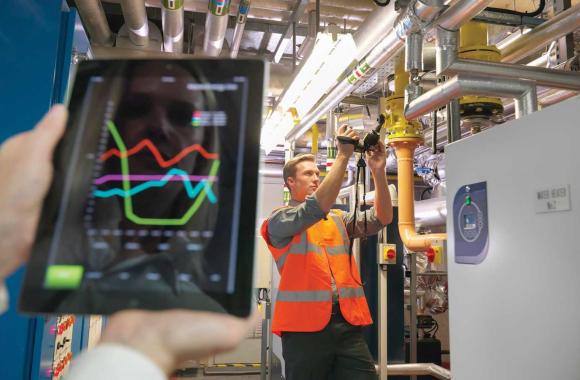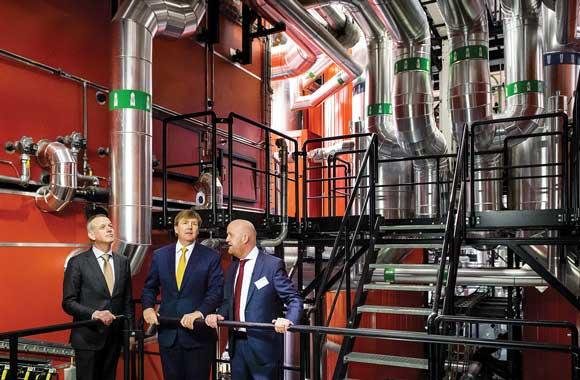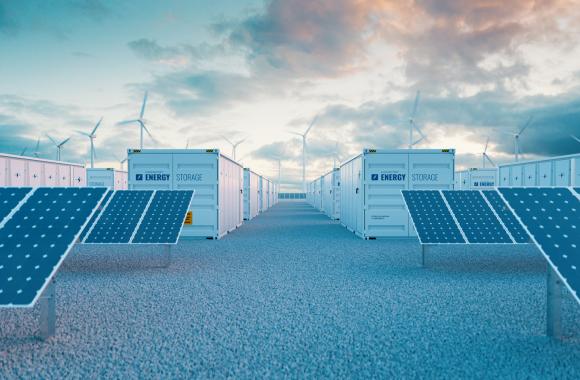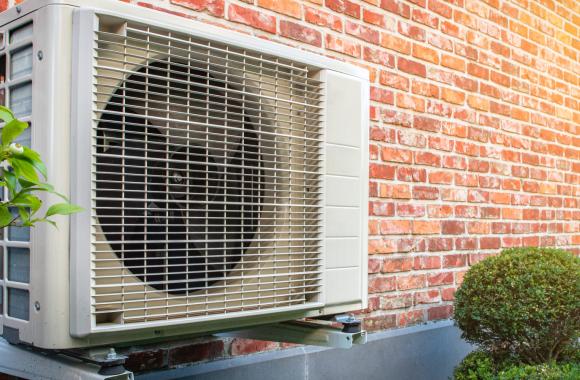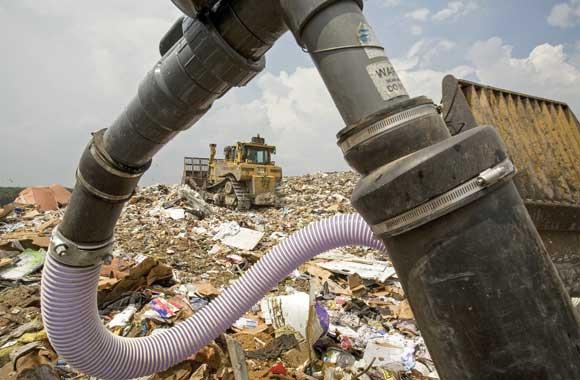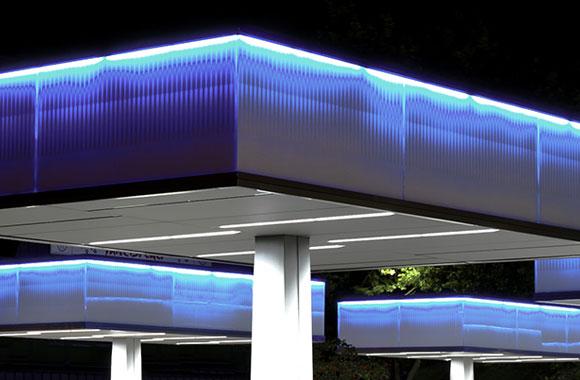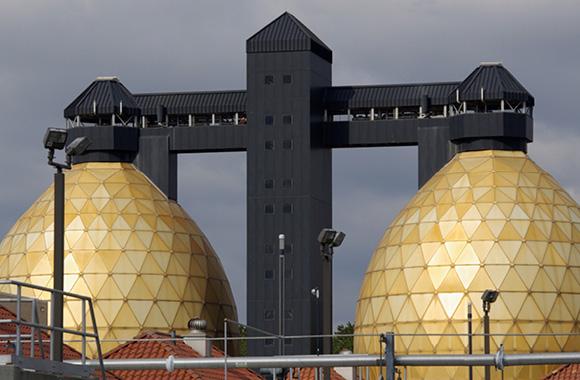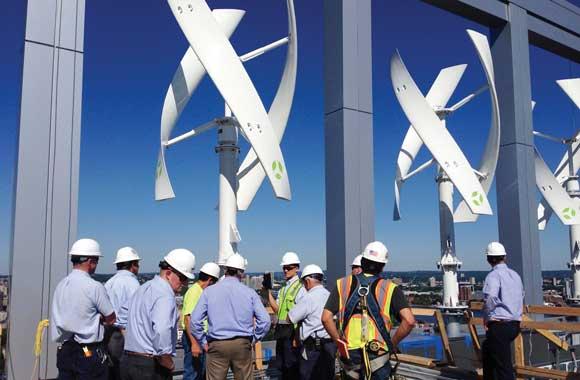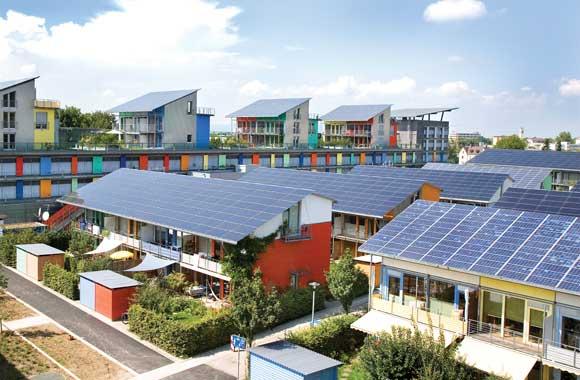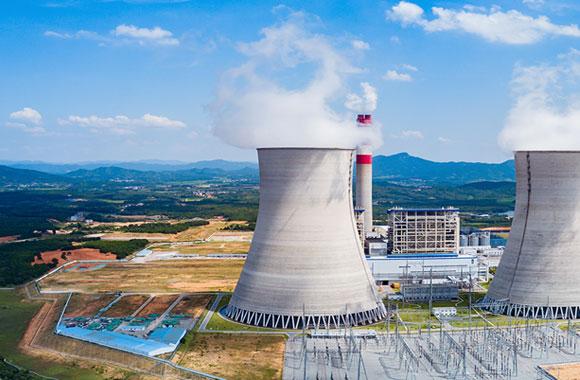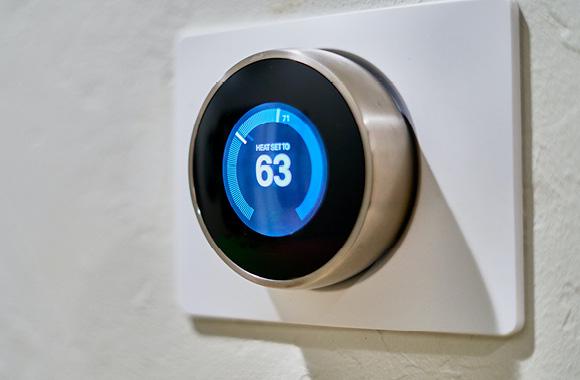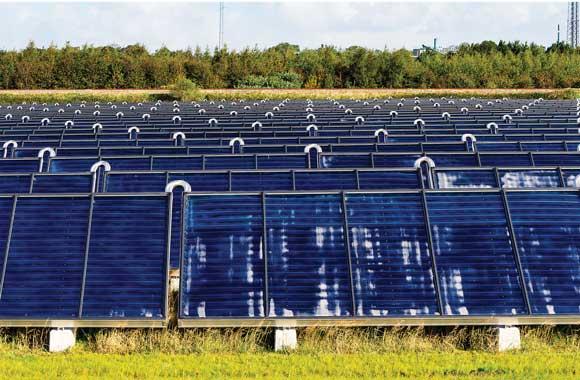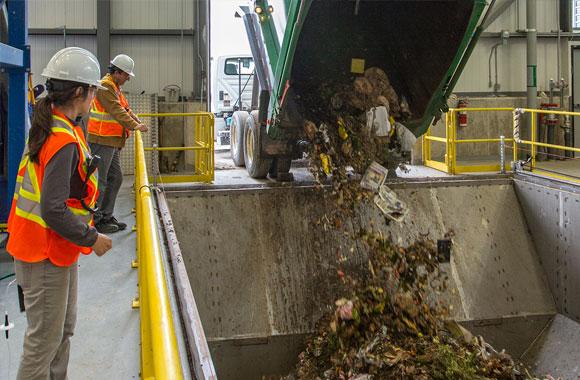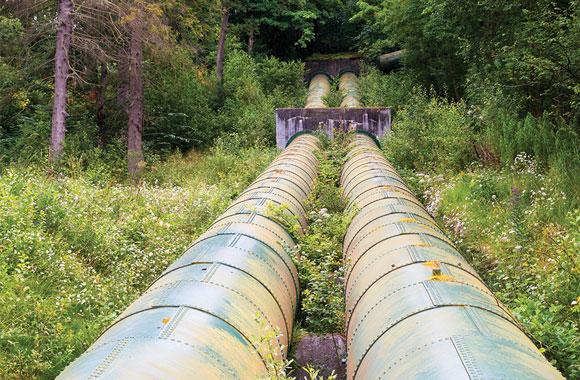Onshore Wind Turbines
Onshore wind turbines generate electricity at a utility scale, comparable to power plants. They replace fossil fuels with emissions-free electricity.
Reduced/Sequestered
2020–2050
To Implement
Operational Savings
Impact
Onshore wind turbines are rapidly being incorporated into electricity infrastructure around the world. An increase from 4.4 percent of world electricity generation to 20–27 percent by 2050 could reduce emissions by 46.95–143.56 gigatons of carbon dioxide equivalent greenhouse gases. Net first costs to implement are US$0.92–1.89 trillion with lifetime net operational savings of US$3.77–9.83 trillion. These are conservative estimates, however. Costs are falling, technology is improving, and capacity is increasing to generate more electricity at the same or lower cost.
Introduction
The wind industry is marked by a proliferation of turbines, dropping costs, and heightened performance. In many locales, wind is either competitive with or less expensive than coal-generated electricity. In 2018, global cumulative installed onshore wind capacity was 539.6 GW (IRENA, 2019), dominated by China (35 percent), followed by the US (17 percent), Germany (10 percent), India (6 percent), and Spain (4 percent).
Onshore wind farms have small footprints, typically using no more than 1 percent of the land they sit on, so grazing, farming, recreation, or conservation can happen simultaneously with power generation. What’s more, it takes one year or less to build a wind farm—quickly producing energy and a return on investment.
Project Drawdown’s Onshore Wind Turbines solution involves deployment of onshore utility-scale wind power technologies. This solution replaces conventional electricity-generating technologies such as coal, oil, and natural gas power plants.
The variable nature of wind means there are times when turbines are not turning. Investment in 24/7 renewables such as geothermal, energy storage, transmission infrastructure, and distributed generation is essential to its growth.
Methodology
Total Addressable Market
We based the total addressable market for the Onshore Wind Turbines solution on projected global electricity generation from 2020 to 2050. The total addressable market is different for the two adoption scenarios because Scenario 2 projects extensive electrification of transportation, space heating, etc., dramatically increasing demand and therefore production of electricity worldwide.
We estimated current adoption (the amount of functional demand supplied in 2018) at 4.36 percent (1,150 terawatt-hours) of total electricity generation.
Adoption Scenarios
We calculated impacts of increased adoption of onshore wind turbines from 2020 to 2050 by comparing two scenarios with a reference scenario in which the market share was fixed at current levels.
- Scenario 1: This scenario is based on the yearly averages of four optimistic scenarios: IEA (2017) Energy Technology Perspectives 2DS and B2DS scenarios, IEA (2018) World Energy Outlook SDS, and Equinor (2018) Renewal Scenario, using a high growth trajectory. In this scenario, 8,732.98 terawatt-hours of capacity is installed (20 percent of the total addressable market).
- Scenario 2: This scenario is based on the yearly average values of scenarios for three 100 percent renewable energy sources used for electricity generation by 2050: Greenpeace (2015) Advanced Energy [R]evolution Scenario, Ram et al. (2019) scenario, and Ecofys (2018) 1.5°C scenario. In this scenario, 18,920.27 terawatt-hours of capacity is installed (27 percent of the total addressable market).
Financial Model
All monetary values are presented in 2014 US$.
We used an average installation cost of US$1,635 per kilowatt and a learning rate of 9.65 percent, resulting in first costs to implement of US$1,155 per kilowatt in 2030 and US$1,026 in 2050. We used an average capacity factor of 33.6 percent for onshore wind turbines, compared with 57 percent for conventional technologies (i.e., coal, natural gas, and oil power plants). Variable operation and maintenance costs were US$0.024 per kilowatt-hour and fixed costs were US$48.7 per kilowatt for onshore wind, compared with US$0.005 per kilowatt-hour and US$34.7 per kilowatt for the conventional technologies. In some regions, reports for first costs have been significantly lower (around US$1,100 and US$1,200 per kilowatt in the United States and China) and much higher for capacity factors (reaching 55 percent in the US).
Nonetheless, because of the differences in levels and speed of adoption at regional scales, more conservative values were chosen derived from a global analysis.
Integration
To integrate the Onshore Wind Turbines solution with other solutions, we adjusted the total addressable markets to account for reduced demand resulting from the growth of more energy-efficient technologies (e.g., LED Lighting and High-Efficiency Heat Pumps) as well as increased electrification from other solutions, such as Electric Cars and High-Speed Rail. We calculated grid emissions based on the annual mix of different electricity-generating technologies over time. We determined emissions factors for each technology through a meta-analysis of multiple sources, accounting for direct and indirect emissions.
Results
Scenario 1 yielded a net first cost to implement of US$0.92 trillion from 2020 to 2050, with US$3.77 trillion in lifetime savings. Under this scenario, onshore wind turbines could save 46.95 gigatons of carbon dioxide equivalent emissions from 2020 to 2050.
Scenario 2 produced 143.56 gigatons of carbon dioxide equivalent emissions savings and yielded US$ 9.83 trillion in lifetime savings for a first cost of US$1.88 trillion.
Discussion
Wind power plays a large and essential role in any long-term projections of a low-carbon future. It does not require mining or drilling for fuel, so its costs are not susceptible to fluctuations in fossil fuel prices.
One concern with wind electricity is intermittency. Wind speeds vary on a seasonal and hourly basis, requiring back-up power or storage at certain times to meet electricity demand and potentially investments and improvements in grid infrastructure and the flexibility of power systems. Both studies and real-world experience suggest these investments are manageable and cost less than fossil fuels when externalities (health and environmental impacts) are taken into account. Further, regions that do not yet have a centralized electric system designed around fossil use could easily design a flexible or distributed electricity system to take advantage of this resource.
Wind power capacity is projected to continue growing steadily with or without enabling climate policies. However, deployment could be accelerated by policies that put a price on carbon emissions, feed-in tariffs, renewable portfolio standards encouraging renewable energy use, public research and development to help advance the technology and further lower costs, and financial incentives such as production credits and tax breaks.
References
Ecofys. (2018). Energy transition within 1.5°C: A disruptive approach to 100% decarbonisation of the global energy system by 2050. Ecofys - A Navigant Company. Retrieved from: https://www.ecofys.com/files/files/ecofys-a-navigant-company-2018-energy-transition-within1.5c.pdf
Equinor. (2018). Equinor’s Energy Perspectives 2018: A Call for Action. Equinor. Retrieved from https://www.equinor.com/en/how-and-why/sustainability/energy-perspectives.html
Greenpeace. (2015). World Energy [R]evolution, a sustainable world energy outlook. Retrieved from: http://www.greenpeace.org/international/Global/international/publications/climate/2015/Energ y-Revolution-2015-Full.pdf
IEA (2017). Energy Technology Perspectives 2017 - Catalysing Energy Technology Transformations. International Energy Agency (IEA). Available at: https://www.iea.org/etp/
IEA (2018). World Energy Outlook 2018. International Energy Agency (IEA). Available at: https://webstore.iea.org/world-energy-outlook-2018
IRENA. (2019). Renewable Energy Statistics 2018. International Renewable Energy Agency. Retrieved from: https://www.irena.org/publications/2019/Jul/Renewable-energy-statistics-2019
Ram M., Bogdanov D., Aghahosseini A., Gulagi A., Oyewo A.S., Child M., Caldera U., Sadovskaia K., Farfan J., Barbosa LSNS., Fasihi M., Khalili S., Dalheimer B.,Gruber G., Traber T., De Caluwe F., Fell H.-J., Breyer C. (2019). Global Energy System based on 100% Renewable Energy –Power, Heat, Transport and Desalination Sectors. Study by Lappeenranta University of Technology and Energy Watch Group, Lappeenranta, Berlin, March 2019. Available at: http://energywatchgroup.org/wpcontent/uploads/EWG_LUT_100RE_All_Sectors_Global_Report_2019.pdf
What You Can Do
Consider investing in funds that advance the transition to clean energy.
Show your support local policies and ordinances that allow installation of wind turbines in appropriate locations.
- Expand your knowledge by exploring another Drawdown solution.
Co-benefits
Onshore wind turbines are less expensive and less polluting than coal power plants.
Green energy technologies provide new job opportunities in design, construction, installation, and more.



